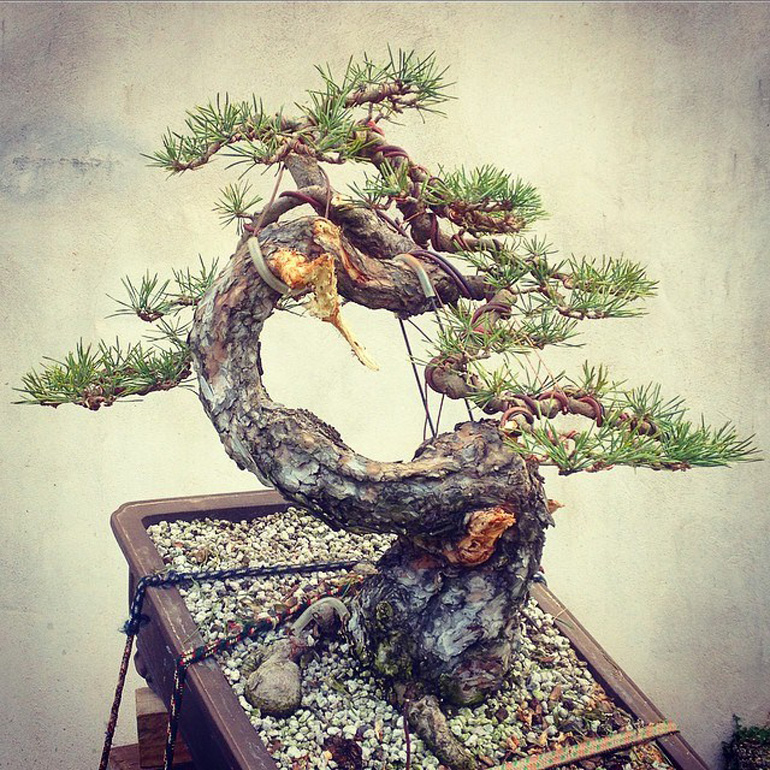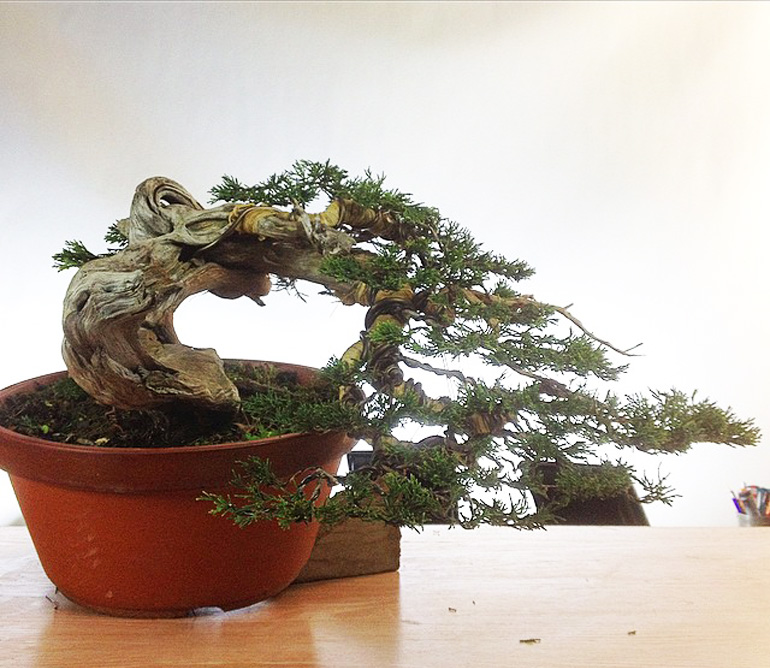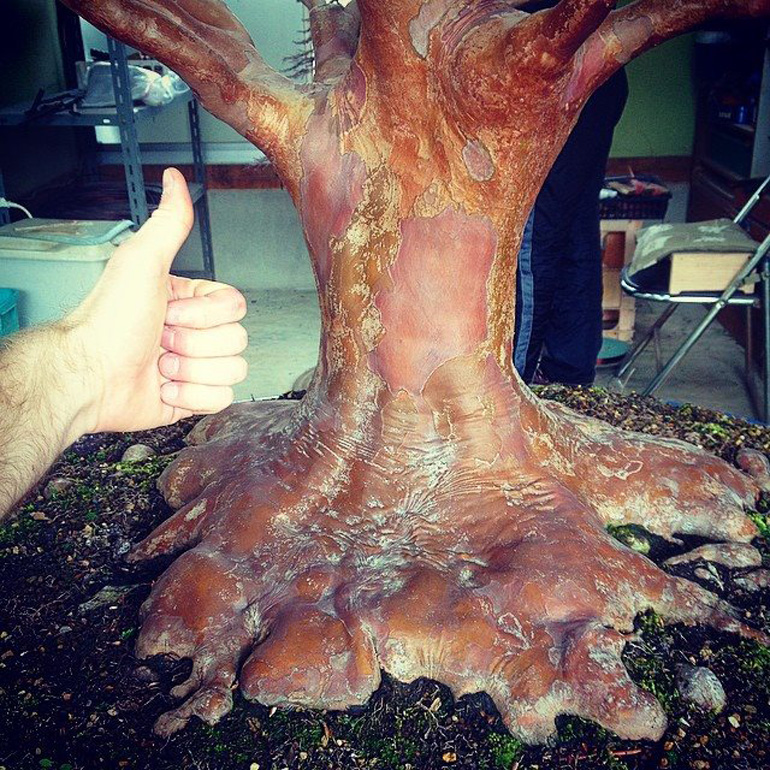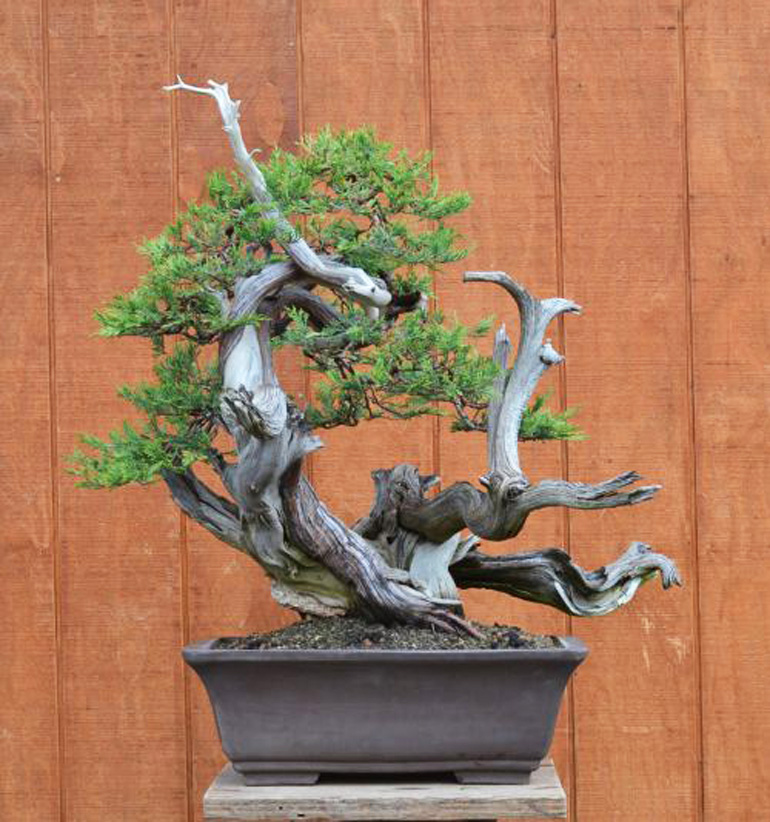
This old collected Rocky Mountain juniper is from Michael Hagedorn's Crataegus Bonsai portfolio.
What follows has been lifted word for word, photo for photo from Michael Hagedorn’s Crataegus Bonsai. We usually just borrow bits and pieces, so reprinting an entire borrowed post might be a first.
If you don’t know Crataegus Bonsai (or even if you do), I strongly encourage you to visit and spend some time there. Michael’s depth and breath of bonsai wisdom and his ability to communicate what he knows (with a light touch and sense of humor) will enhance your bonsai experience. I guarantee it.
Spring Watering Tip-
April 17, 2015 by Michael Hagedorn, Crataegus Bonsai (Michael’s text and captions are in italics).
“There are a lot of things we might say about watering bonsai. I’ve tried a few times on this blog to mention some of them. Some are hard to make sense of in words, but as ever I’m willing to try. This one is about watering recently repotted trees.
“At post-repotting time we need to be awake to one change-up, and that is that the interior soil mass (the part that was returned to the pot) may dry out much faster than you’d think.”
"If that interior area is full of fine roots, it will dry out fast after repotting."
 "This pine is beginning to develop a solid mass of soil and roots, and this is the area that we’ll take our moisture ‘read’ from when deciding when to water. When dry, it will look very light colored compared to the surrounding new soil."
"This pine is beginning to develop a solid mass of soil and roots, and this is the area that we’ll take our moisture ‘read’ from when deciding when to water. When dry, it will look very light colored compared to the surrounding new soil."
“If you cut all the fine roots off in repotting your tree, shame on you, but that’s a different issue. For the sake of this example, we’ll assume you have fine roots, and that we’re talking only about established trees with a solid mass of roots and soil. There are myriad other situations, such as proto-root balls with stringy roots that don’t yet hold soil together, but these photos show what we’re hoping for and working towards.”
 "A deciduous tree with a very mature ‘loaf’ of roots and soil that is returned to the pot, to be surrounded with new soil."
"A deciduous tree with a very mature ‘loaf’ of roots and soil that is returned to the pot, to be surrounded with new soil."
“Especially with conifers, we usually don’t prune any branches at the same time as repotting. And so…
"In repotting refined bonsai, we’ve created a situation where fewer roots are going to be supplying the same upper water need."
“This interior mass we’re talking about, this is the area you should watch to determine when to water. Ignore, for a few weeks at least, taking your moisture reading from the new soil you’ve settled in around the original mass. There’s no active roots in the new soil yet and it won’t be drying out fast.”
"Another thing to keep in mind when repotting is to keep a portion of this old soil mass exposed, not covered with new soil, so that you can see when it’s drying out."
 "Freshly repotted beech, showing the two zones of soil—the older soil that is a bit green and mossy near the roots, and the newer soil that is gray (sphagnum moss covering new soil, actually). The older soil will be our indicator when to water, and is not covered with new soil on top but is exposed."
"Freshly repotted beech, showing the two zones of soil—the older soil that is a bit green and mossy near the roots, and the newer soil that is gray (sphagnum moss covering new soil, actually). The older soil will be our indicator when to water, and is not covered with new soil on top but is exposed."
“In many cases you’ll be watering when the new soil is still moist. So we ignore that area. Again, I’m only commenting on watering repotting bonsai with more mature root structures.
“To sum up, only read the moisture level where there are roots to determine when to water.
Wordy post. Hope some of that made sense!
“Here’s a previous post about watering that might spread a broader net around the issue of watering.”
All the above photos and all the text in captions are from Michael Hagedorn’s Crataegus Bonsai.
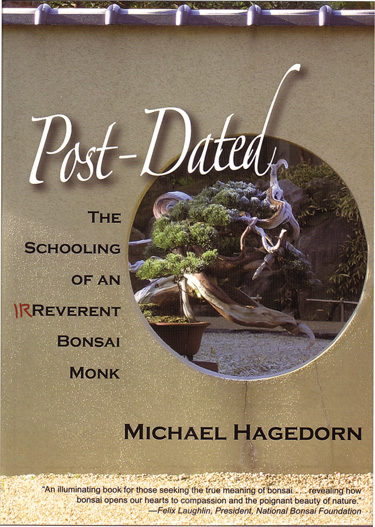
I’ve said it before… Still the best bonsai read in the English language.


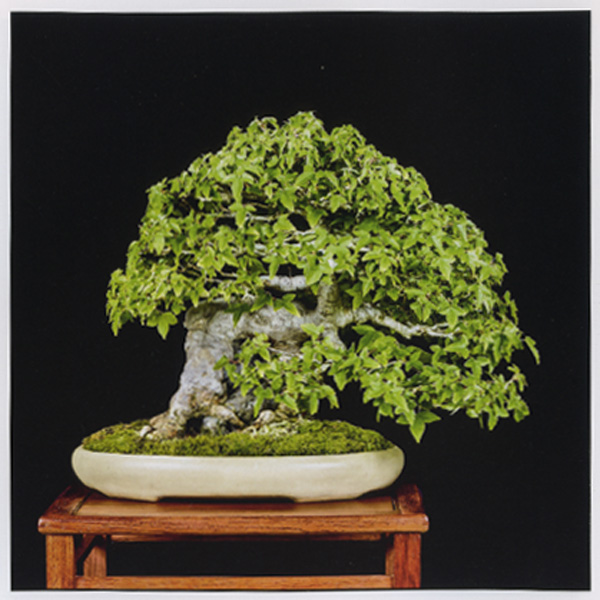
We still have some 3rd Exhibition Albums at Stone Lantern. This is good time to get yours during our 20% to 25% off Site Wide Sale.


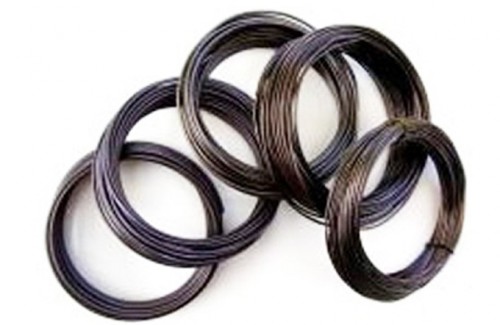
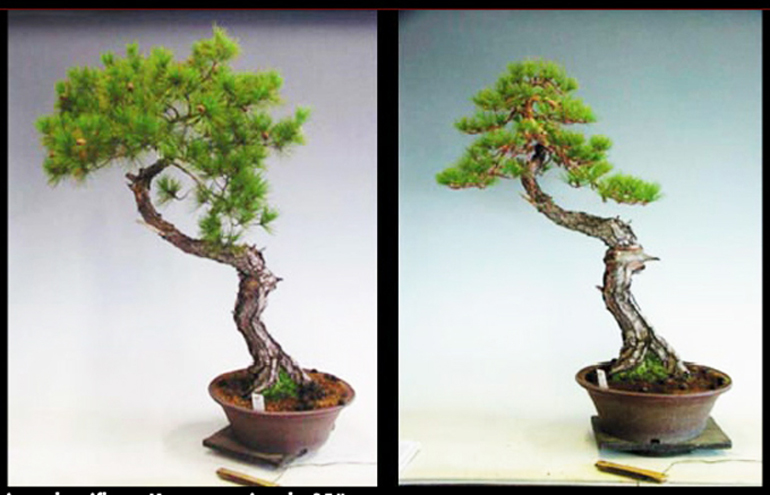
 I borrowed this Vine maple photo from
I borrowed this Vine maple photo from 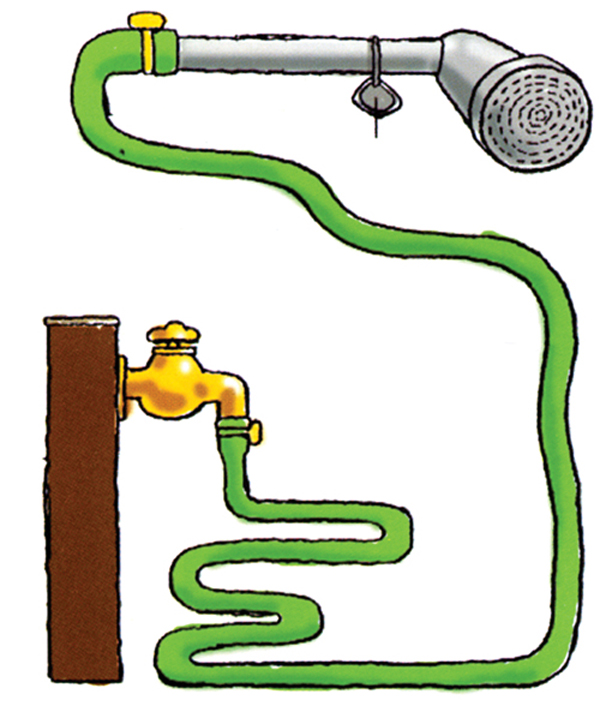 A set up like this will come in handy if you live out west. Back here in the northeast, there are often long wet stretches were we barely have to uncoil ours. This image is from our Masters' Series Juniper book (due back in print in the late summer or early fall).
A set up like this will come in handy if you live out west. Back here in the northeast, there are often long wet stretches were we barely have to uncoil ours. This image is from our Masters' Series Juniper book (due back in print in the late summer or early fall).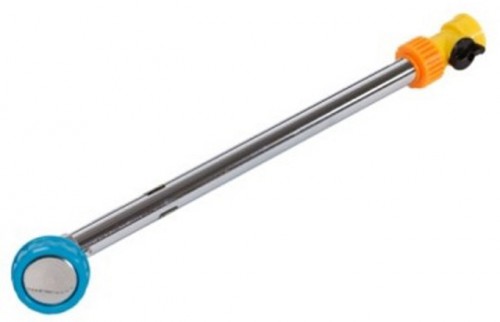 You can visit Stone Lantern for
You can visit Stone Lantern for 
 "This pine is beginning to develop a solid mass of soil and roots, and this is the area that we’ll take our moisture ‘read’ from when deciding when to water. When dry, it will look very light colored compared to the surrounding new soil."
"This pine is beginning to develop a solid mass of soil and roots, and this is the area that we’ll take our moisture ‘read’ from when deciding when to water. When dry, it will look very light colored compared to the surrounding new soil."
 "A deciduous tree with a very mature ‘loaf’ of roots and soil that is returned to the pot, to be surrounded with new soil."
"A deciduous tree with a very mature ‘loaf’ of roots and soil that is returned to the pot, to be surrounded with new soil."
 "Freshly repotted beech, showing the two zones of soil—the older soil that is a bit green and mossy near the roots, and the newer soil that is gray (sphagnum moss covering new soil, actually). The older soil will be our indicator when to water, and is not covered with new soil on top but is exposed."
"Freshly repotted beech, showing the two zones of soil—the older soil that is a bit green and mossy near the roots, and the newer soil that is gray (sphagnum moss covering new soil, actually). The older soil will be our indicator when to water, and is not covered with new soil on top but is exposed."


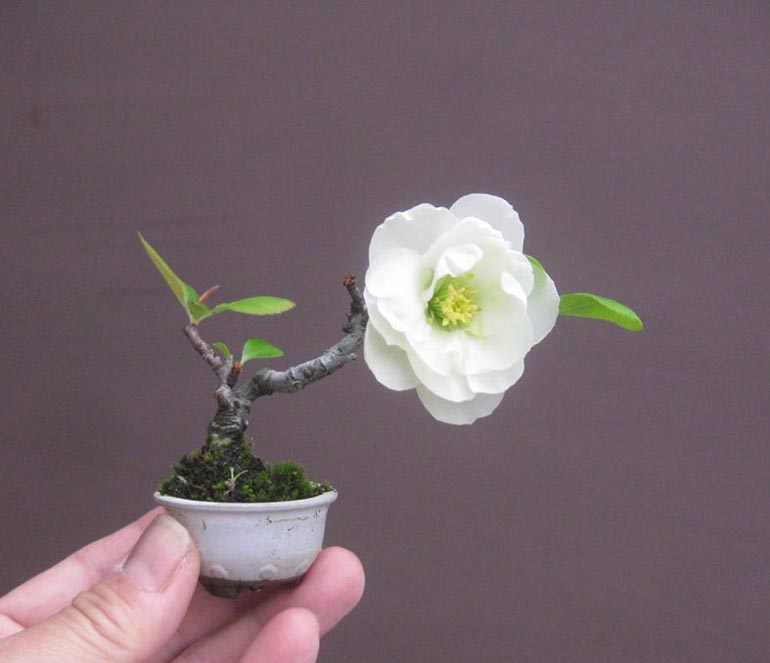
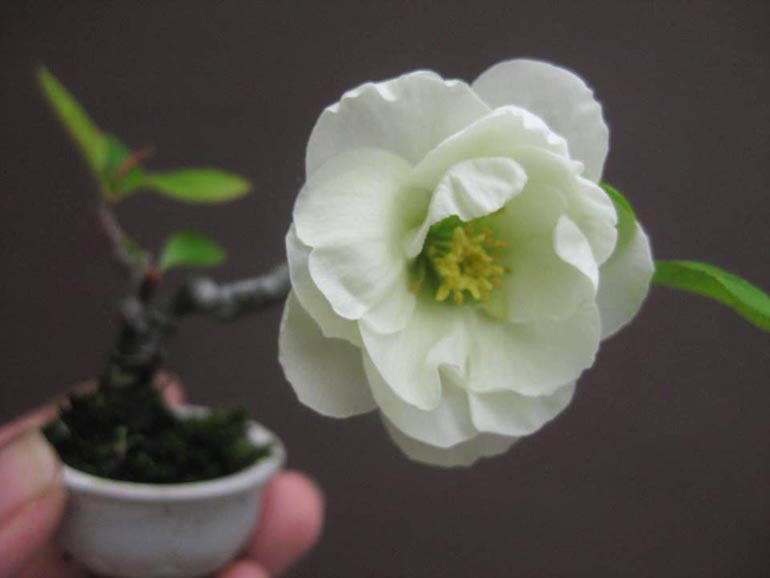

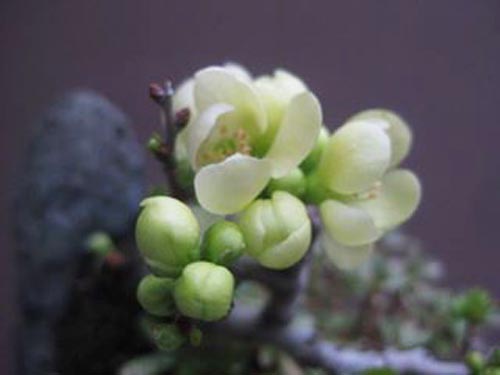

 Here’s
Here’s 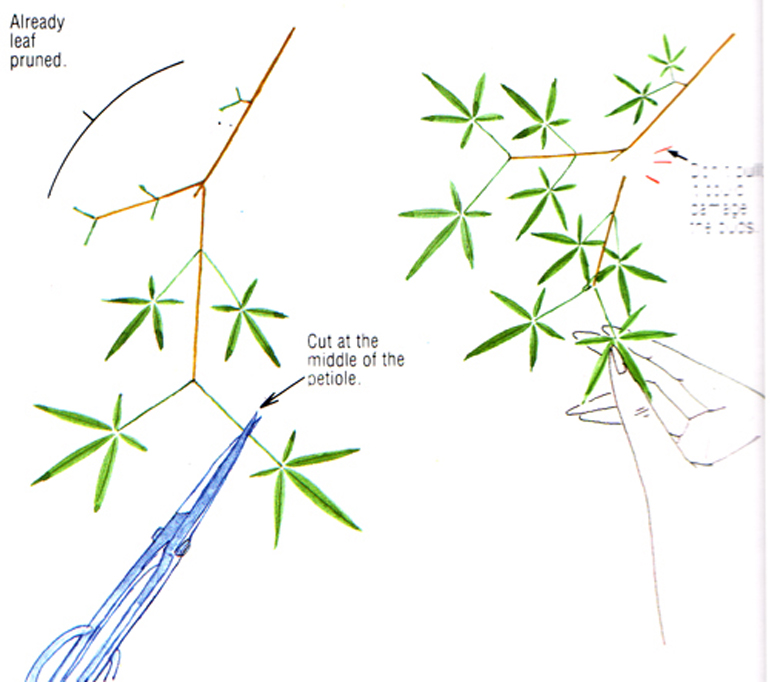
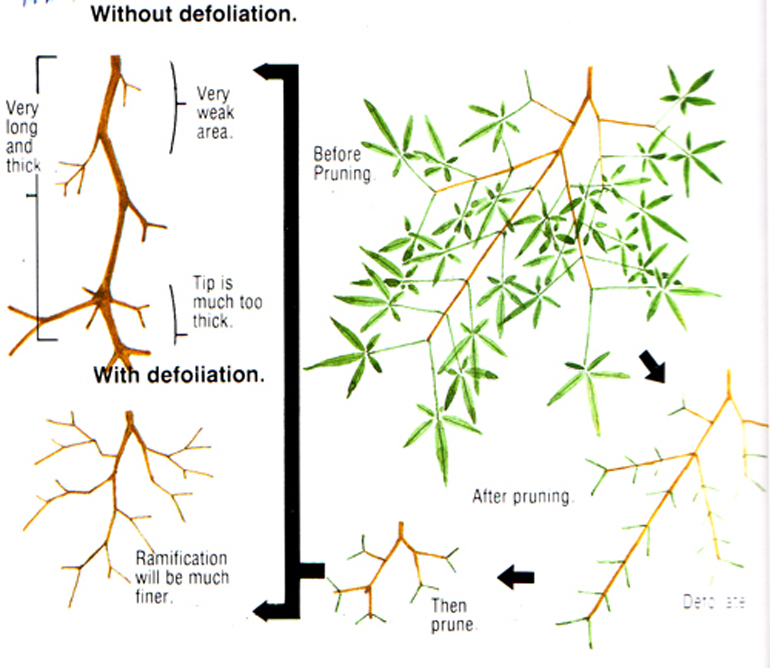 Defoliate, then prune
Defoliate, then prune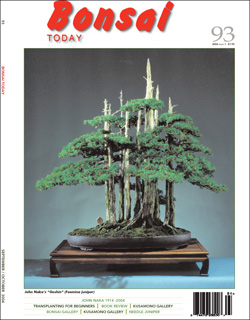 Our
Our 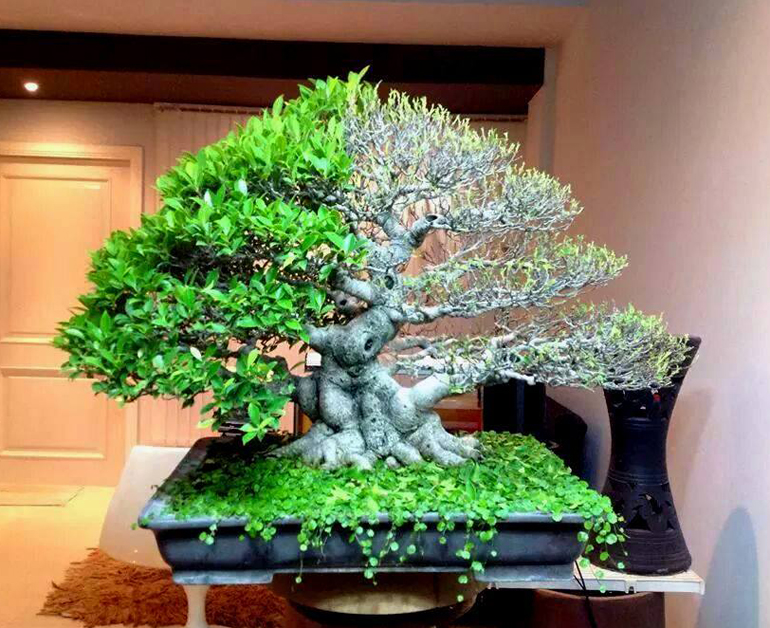
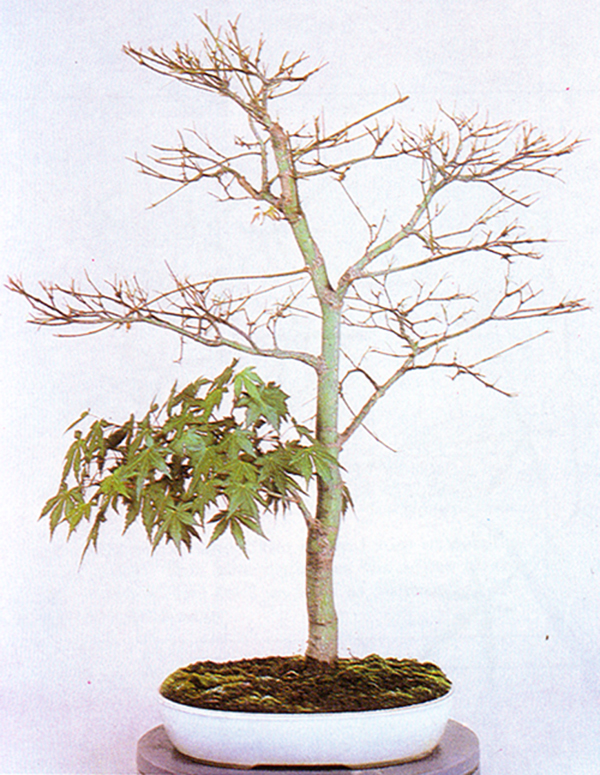 This Japanese maple (Acer palmatum) has been partially defoliated. The first branch is too small relative to the rest of the tree, so the purpose of the defoliation is to speed up the development of the first branch while slowing down the development of the rest of the tree. This works because energy flow decreases in areas that have been defoliated. Conversely, because the energy from the roots has to go somewhere, energy flow increases where leaves are left on. The photos in this post are from
This Japanese maple (Acer palmatum) has been partially defoliated. The first branch is too small relative to the rest of the tree, so the purpose of the defoliation is to speed up the development of the first branch while slowing down the development of the rest of the tree. This works because energy flow decreases in areas that have been defoliated. Conversely, because the energy from the roots has to go somewhere, energy flow increases where leaves are left on. The photos in this post are from 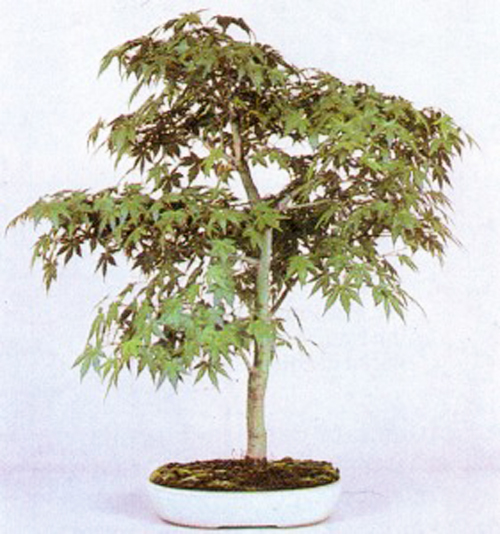 Before defoliation. Too much energy is flowing to the upper reaches of the tree. Without redirecting this energy, the top will continue to strengthen, while the lower branch remains relatively weak. This occurs because most trees (including maples), are apically dominant, i.e. most of the energy flows up towards the tree's apex. Because of this disproportionate energy flow, it would be impossible to style most bonsai without some sort of energy balancing.
Before defoliation. Too much energy is flowing to the upper reaches of the tree. Without redirecting this energy, the top will continue to strengthen, while the lower branch remains relatively weak. This occurs because most trees (including maples), are apically dominant, i.e. most of the energy flows up towards the tree's apex. Because of this disproportionate energy flow, it would be impossible to style most bonsai without some sort of energy balancing. Only the apex has been defoliated on this maple. Because maples and most trees are apically dominant, it is sometimes necessary to redirect energy downward. You could accomplish this by simply pruning off the top of the tree, but in this case, the artist wants to keep the top as it is (at least for now) while encouraging growth in the rest of the tree.
Only the apex has been defoliated on this maple. Because maples and most trees are apically dominant, it is sometimes necessary to redirect energy downward. You could accomplish this by simply pruning off the top of the tree, but in this case, the artist wants to keep the top as it is (at least for now) while encouraging growth in the rest of the tree.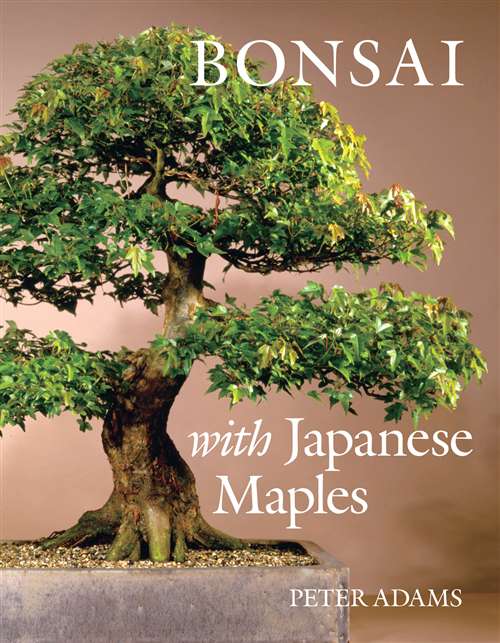

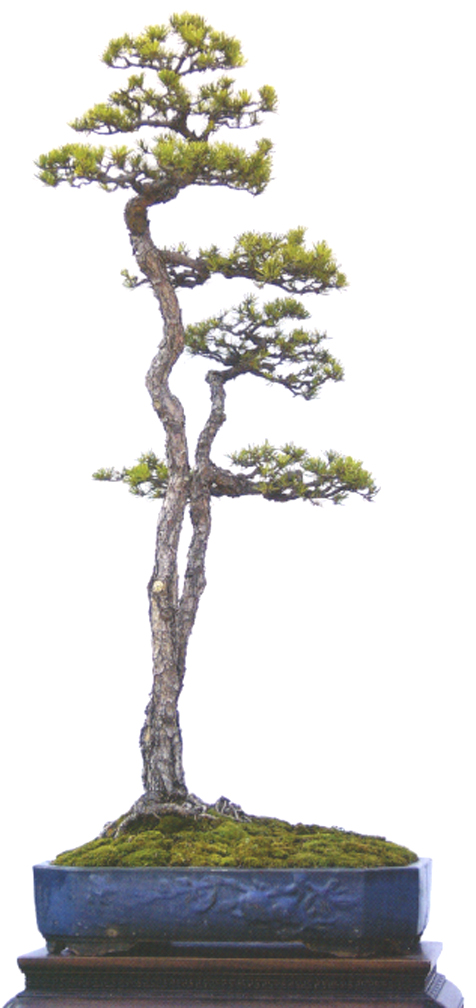
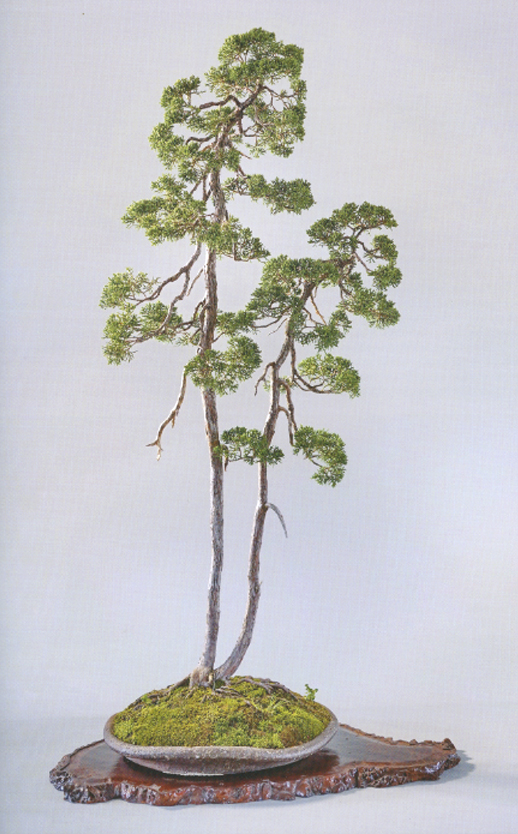
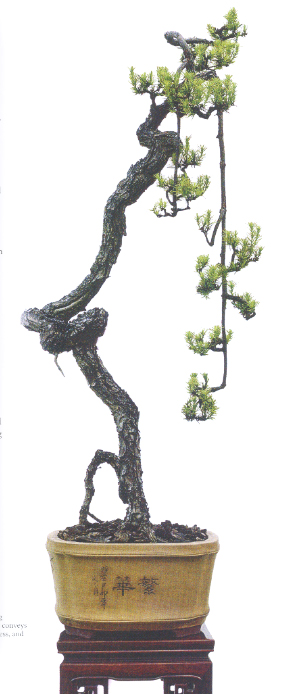
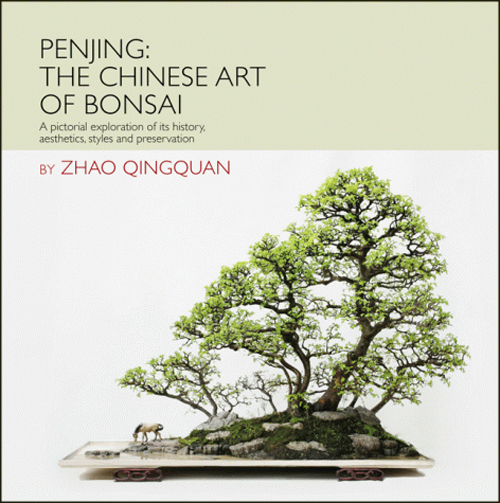
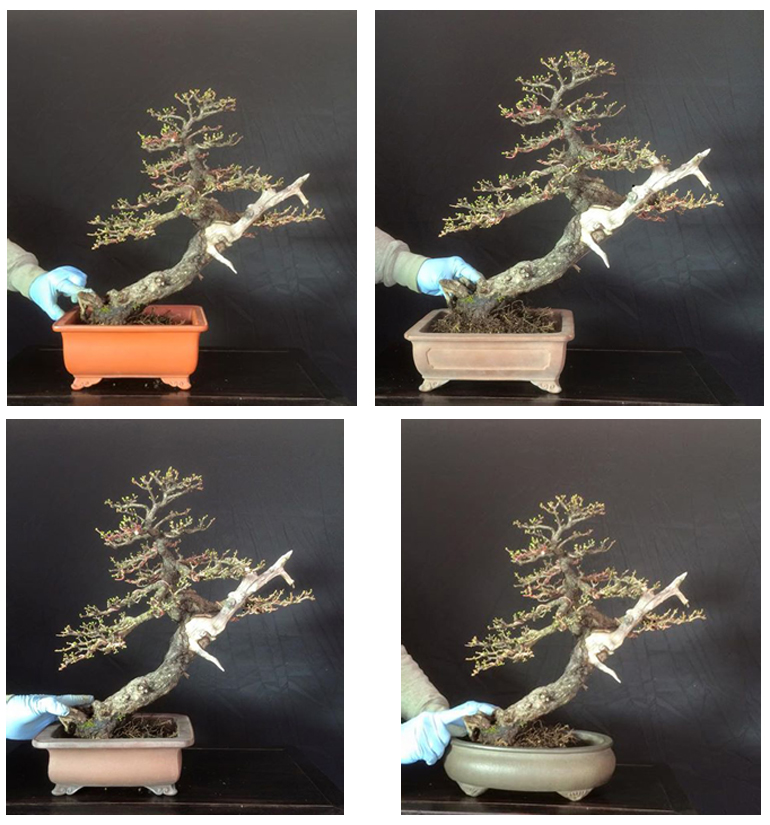
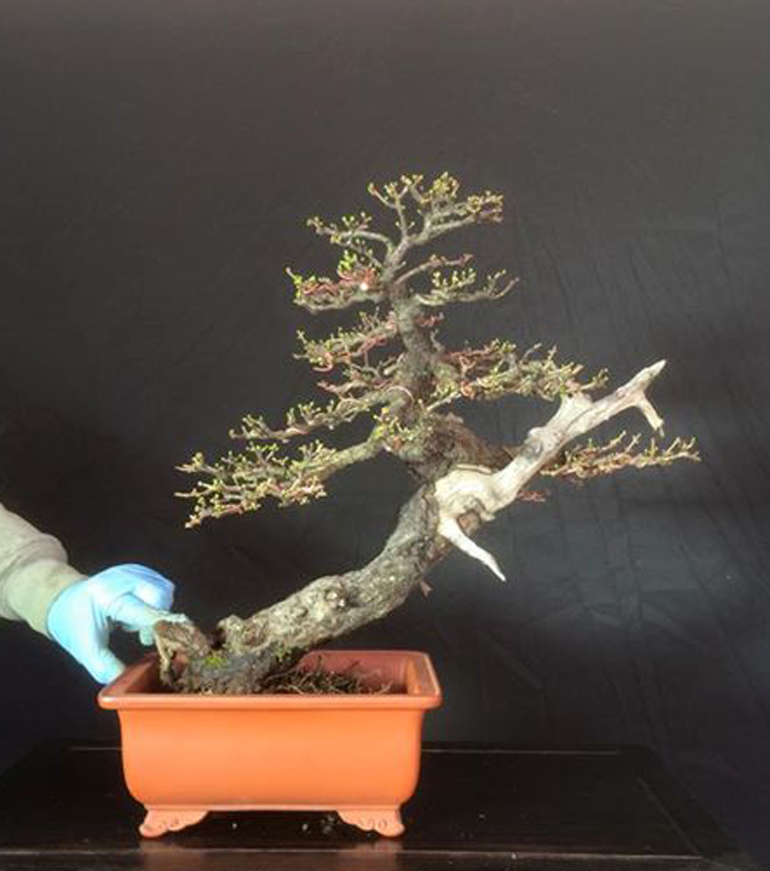
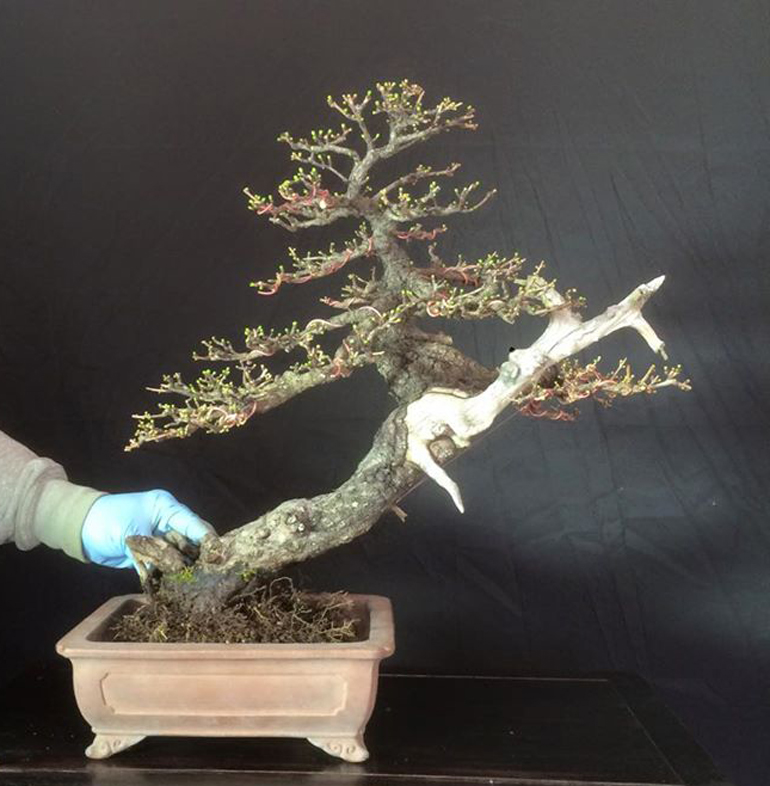
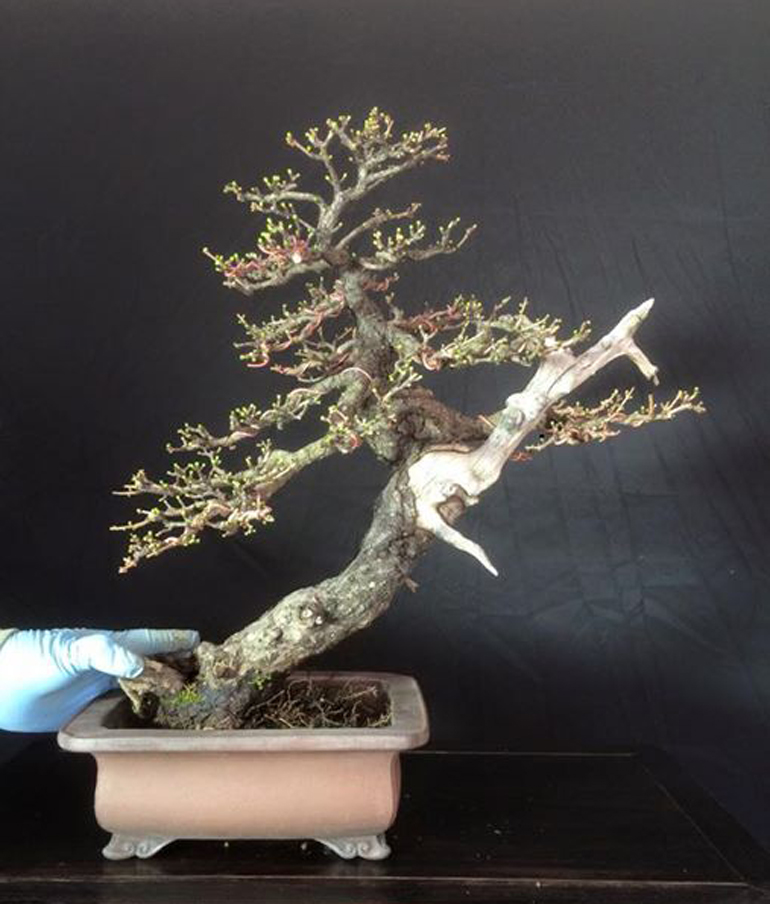
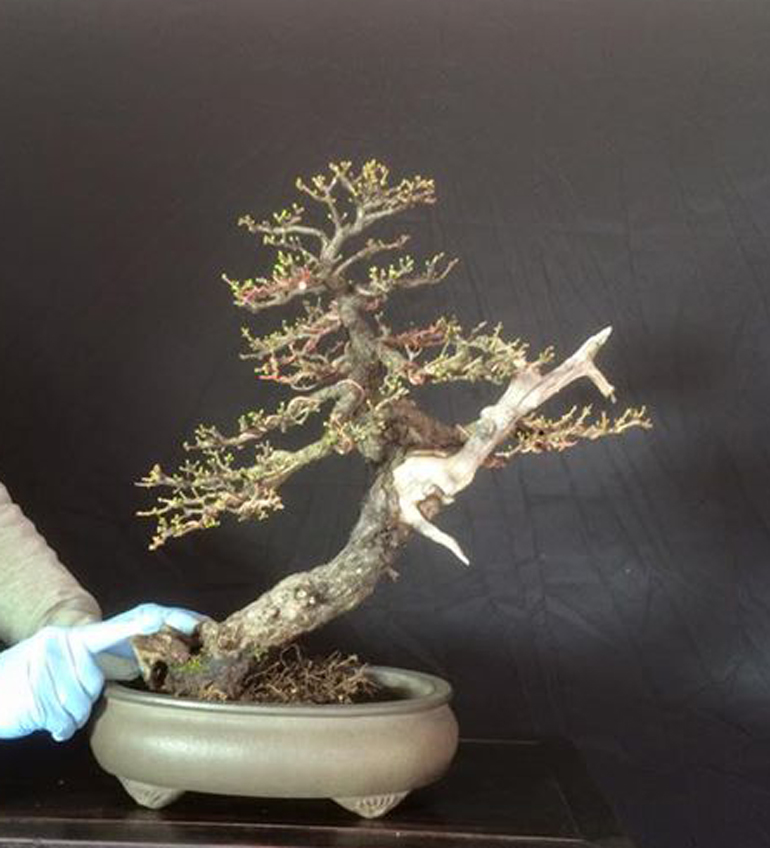

 While we are on the topic of Larches, it seems appropriate to mention
While we are on the topic of Larches, it seems appropriate to mention 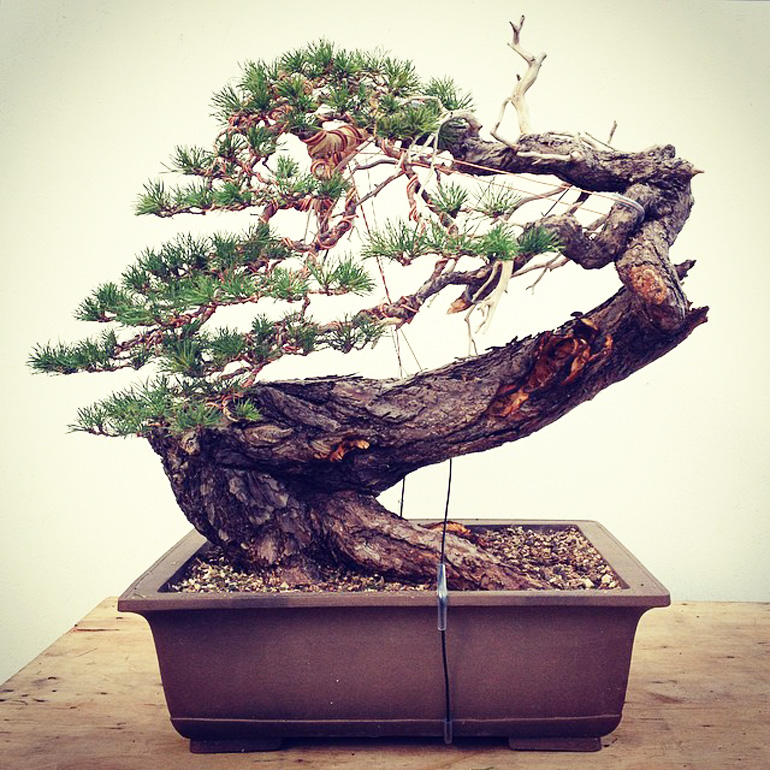

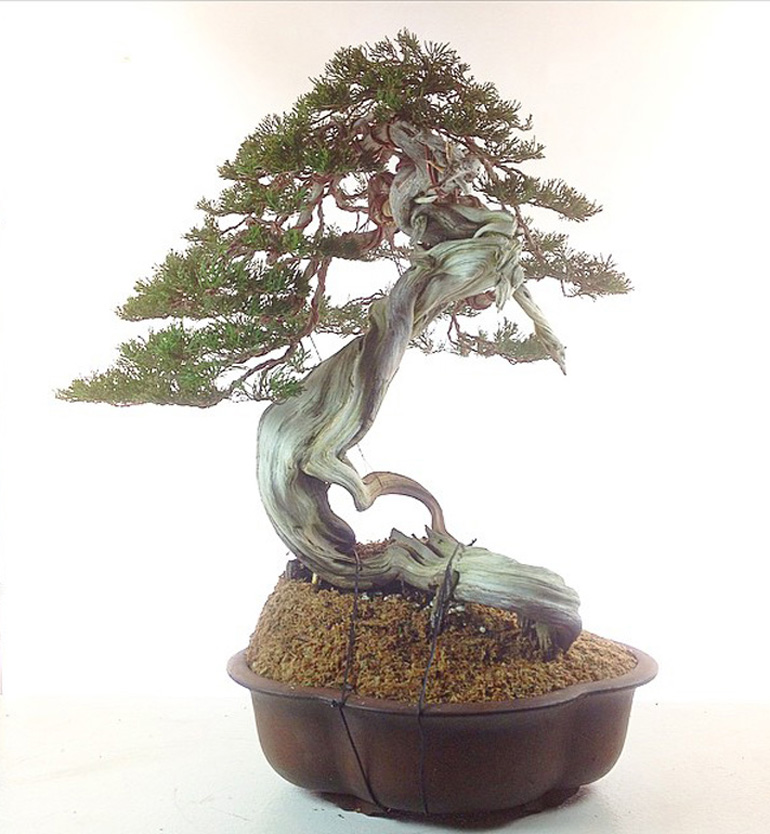 Great tree, but old collected Junipers with massive amounts of carved deadwood are everywhere. But then there's that shapely hole in the deadwood, a little extra touch that might help this one stick in your memory. Bjorn's caption: "Today's work - Sabina Juniper at Bonsai Sense in Majorca, Spain."
Great tree, but old collected Junipers with massive amounts of carved deadwood are everywhere. But then there's that shapely hole in the deadwood, a little extra touch that might help this one stick in your memory. Bjorn's caption: "Today's work - Sabina Juniper at Bonsai Sense in Majorca, Spain."